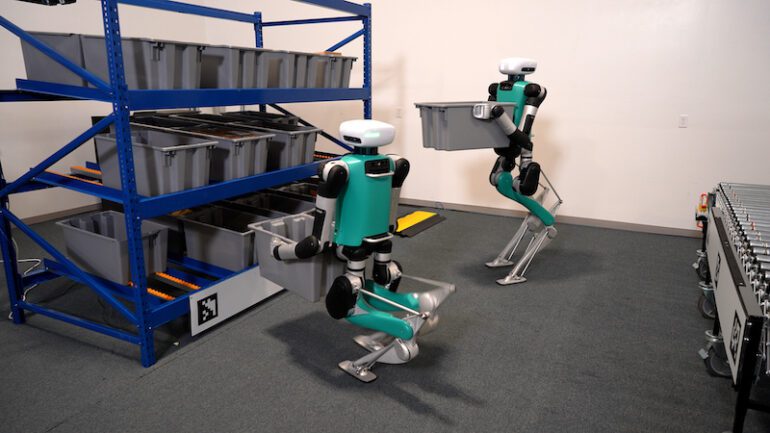- Agility announces formal deployment of humanoid robots after successful pilot with GXO.
- Digit robots to handle plastic totes at Georgia Spanx factory under Robots-as-a-Service (RaaS) model.
- Specific deployment numbers undisclosed, indicating cautious scaling.
- Peggy Johnson, Agility’s CEO, emphasizes focus on ROI and practical application.
- Agility leads in market development and deployment ahead of competitors.
- Amazon also piloting Agility systems; future plans undisclosed.
Main AI News:
Agility, a pioneer in the humanoid robotics sector, is set to transform the logistics landscape following a successful pilot phase with industry giant GXO. The announcement marks a significant step forward for an industry that has often been characterized by promises and limited-scale trials.
Digit, Agility’s humanoid robot, will commence operations at a Georgia-based Spanx factory, tasked with handling plastic totes—an essential function in streamlining warehouse operations. The exact deployment scale remains undisclosed, underscoring the cautious approach typical in early phases of technology adoption.
Under a Robots-as-a-Service (RaaS) model, Agility will lease these advanced systems to GXO, allowing the logistics firm to access cutting-edge technology without the initial capital outlay. This arrangement includes ongoing support and software updates, ensuring seamless integration and operational efficiency.
Peggy Johnson, Agility’s CEO since March, emphasized the company’s commitment to delivering tangible ROI—a crucial distinction in an industry where practical applications often lag behind theoretical potential.
“Agility’s deployment of humanoid robots at customer sites marks a pivotal moment in our industry,” Johnson stated. “By focusing on delivering real value through technologies like Digit, we are setting new benchmarks for operational excellence and customer satisfaction.”
Agility, headquartered in Oregon, has consistently led the market in both technological innovation and practical implementation. As the industry continues to evolve, Agility’s proactive stance positions it as a frontrunner, with implications for future developments in logistics automation.
While Amazon has also piloted Agility systems in its warehouses since last October, formal plans for broader implementation have yet to be disclosed by either company.
Conclusion:
The formal deployment of Agility’s humanoid robots at GXO’s facilities marks a significant advancement in the logistics automation market. By focusing on practical deployment and delivering tangible ROI, Agility sets a precedent for the industry. This move underscores a growing trend towards integrating advanced robotics under flexible service models, potentially reshaping how logistics operations are optimized and managed in the near future.

